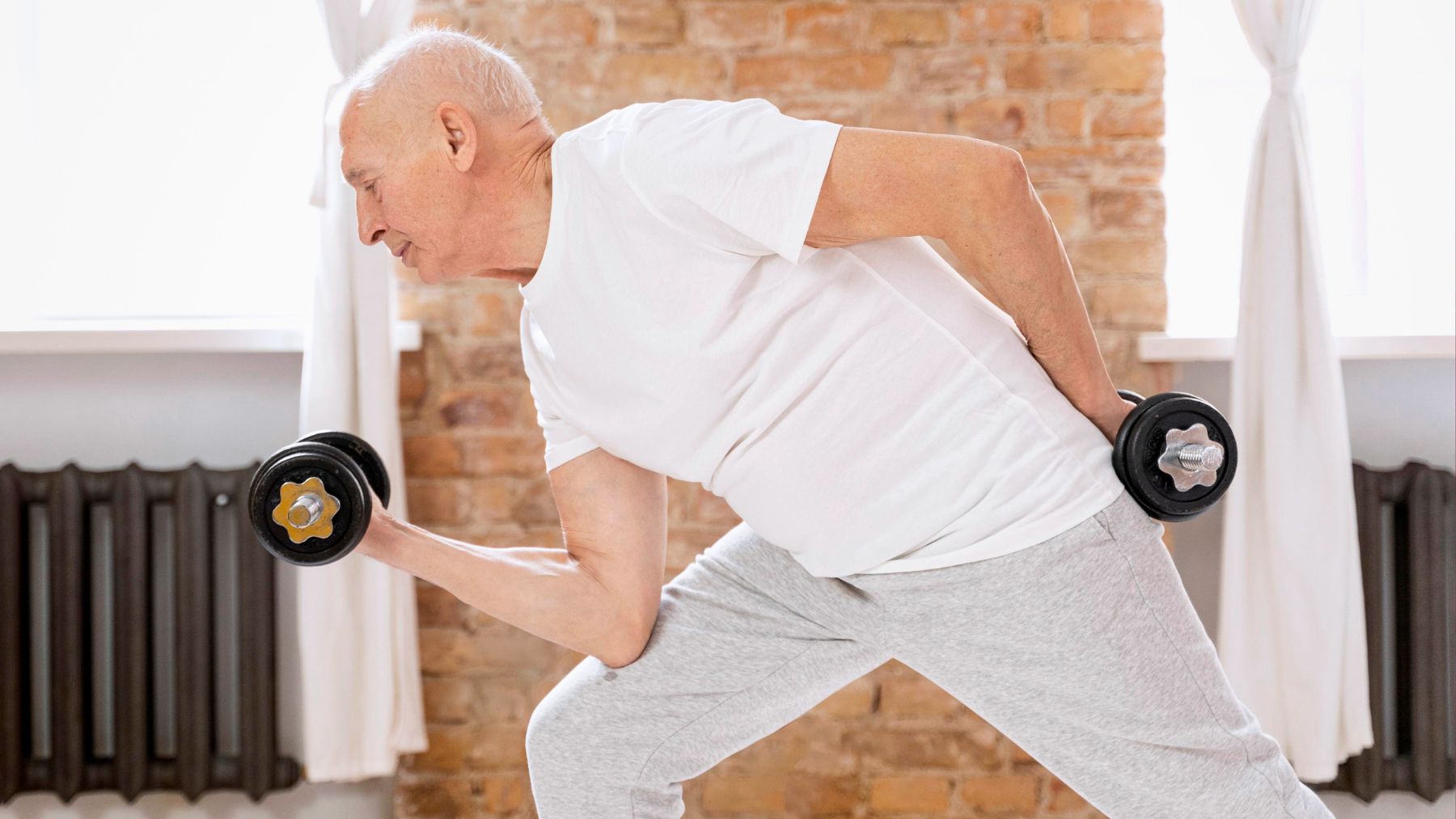For years, people assumed aging meant slowing down and losing strength, but physical therapists say there’s a powerful way to fight back: lifting weights. Research shows resistance training is one of the best tools to keep muscles, bones, and balance strong well into your 60s and beyond.
Experts like Dr. Rachel Tavel, PT, DPT, CSCS, and Abby Bales, PT, DPT, CSCS, point to strength training as a key factor in preventing falls, maintaining independence, and lowering the risk of osteoporosis and cognitive decline. Here, we’ll break down the relevance of weight lifting for older adults and share practical tips on how to start safely.
Why weight lifting supports healthy aging
Muscle naturally declines with age, starting as early as 30, and the rate increases for women after menopause due to hormonal shifts. Carrying groceries, climbing stairs, or even getting up from a chair becomes harder when muscle mass fades. Weight lifting works against this decline by preserving and building muscle while strengthening bones.
Stronger muscles also protect the skeleton. According to the International Osteoporosis Foundation, resistance training can prevent fractures and help preserve bone density, which becomes especially important for women at higher risk of osteoporosis. This protection translates to more stability and fewer falls, one of the leading causes of injury among older adults in the United States.
The benefits don’t stop at the body. A 2023 study in Frontiers in Neuroscience suggested that strength training may reduce the risk of Alzheimer’s and dementia, likely because of its impact on blood flow, brain chemistry, and inflammation. Beyond muscle and bone, it supports metabolism, blood sugar regulation, and posture, all of which affect energy levels and quality of life.
How seniors can start weight lifting safely
Beginning a strength routine later in life can feel intimidating, but therapists stress that it’s never too late. The key is starting small and progressing gradually with safe, controlled movements. Here are some steps to follow:
- Check in with a professional: A physical therapist or trainer can help design a program that matches your health history, bone density, and comfort level.
- Start with body weight or bands: Squats, step-ups, and resistance band pulls build strength without heavy loads. Once confident, you can add dumbbells or kettlebells.
- Focus on form first: Proper technique prevents injury. Use a mirror, videos, or guidance from a coach to check alignment before increasing weight.
- Choose functional moves: Exercises like lunges and pushups mimic everyday activities, making daily life easier and safer.
- Begin lightly and progress slowly: Pick a weight that feels manageable yet challenging by the last few reps. Increase resistance gradually over weeks, not days.
- Prioritize balance and posture: Moves that strengthen the core and back reduce fall risk and improve stability.
- Listen to your body: Muscle fatigue is normal, but sharp pain is not. Adjust or skip any movement that feels wrong.
Starting with two sessions a week is often enough, and many people see progress in six to eight weeks. Over time, aiming for three sessions per week with a mix of upper body, lower body, and core exercises creates a well-rounded program.
